Ask Ethan: Can two identical snowflakes appear?
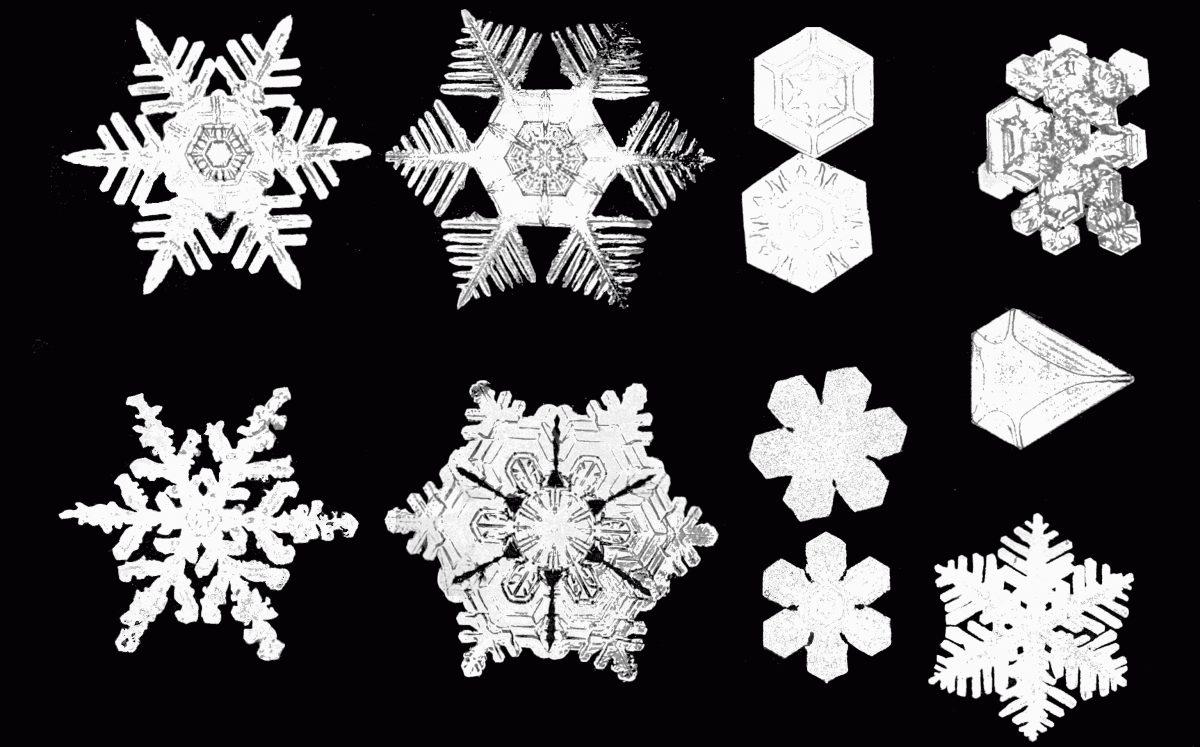
Snowflakes of various shapes and sizes, appeared in the natural environment. Photo from Popular Science Monthly Volume No. 53, 1898.
You may have heard the saying about the “special snowflake”. The point is that the snowflakes are beautiful and valuable because, in their huge number it is impossible to find two identical ones. They say that there are no two identical snowflakes - but is it really so? It is worth referring to what science thinks about it - this is what one of our readers asks us:
I heard that scientists say that there are no two identical snowflakes. And I will say: how can it be known exactly, unless you study all the snowflakes that have fallen to the ground? Maybe somewhere in Russia a snowflake falls simultaneously with an identical snowflake somewhere in Minnesota.
To consider this question from a scientific point of view, you need to understand how a snowflake is made and how likely it is to get two identical snowflakes.
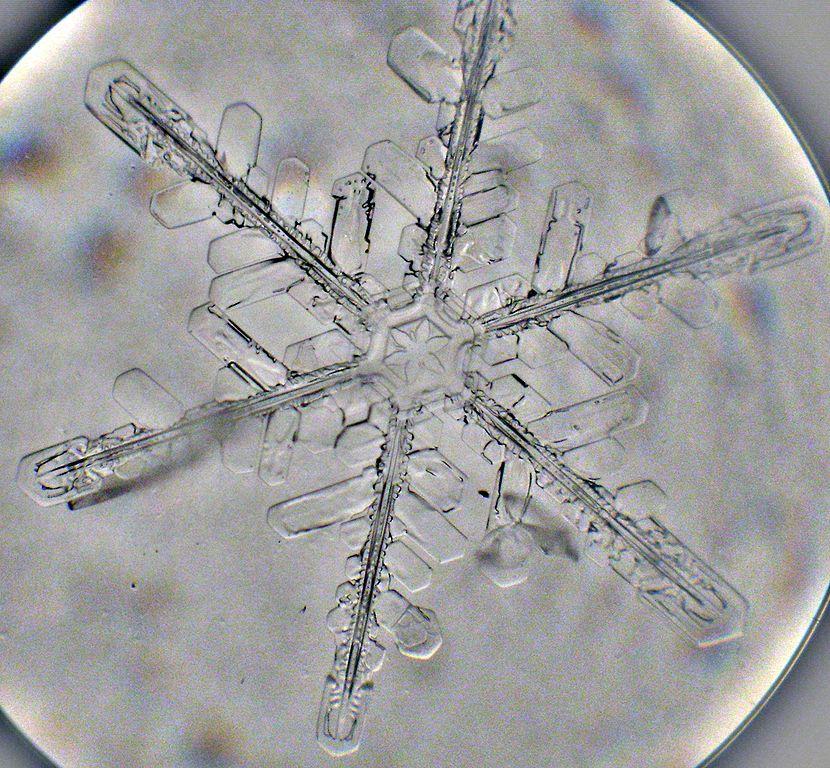
Snowflake under an optical microscope
')
A snowflake is a water molecule, tied together in a certain solid configuration. Most of them have hexagonal symmetry; this is due to the angle at which the water molecules are able to bind to each other. This angle is determined by the physics of the oxygen atom, two hydrogen atoms and electromagnetic interaction. The simplest of microscopic snow crystals, which can be seen with an optical microscope, has a size of one millionth of a meter (1 μm) and can take very simple forms — for example, a flat hexagon. It contains only about 10,000 atoms, and among them one can find many identical ones.
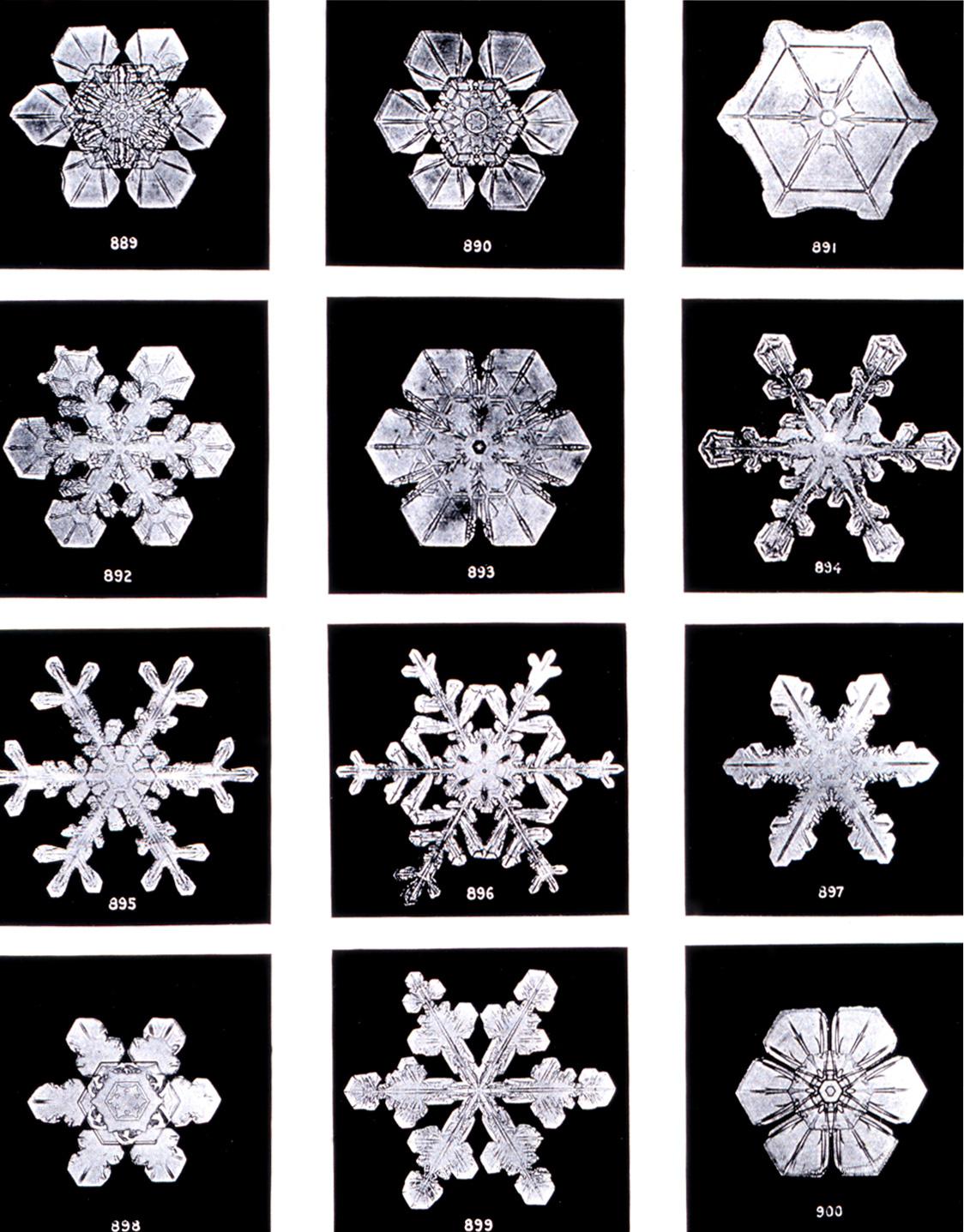
The hexagonal symmetry of snowflakes has been known for a long time. This collection of photos dates back to 1902.
According to the Guinness Book of Records, Nancy Knight, a scientist from the National Center for Atmospheric Research, was fortunate to find two identical snowflakes while researching snow crystals from a snowstorm in Wisconsin in 1988 using a microscope. But Guinness issues a certificate only on the basis of the identity of the snowflakes, taking into account the accuracy available to the microscope. When physics requires the identity of two objects, it means identity down to subatomic particles! Which means:
• It is necessary that such particles
• developed in this configuration
• with the same connections between them
• two different macroscopic systems.
We will learn what it would take.

One water molecule is one oxygen atom and two hydrogen atoms bound together. When frozen water molecules bind together, four other molecules are linked to each of them: one at each vertex of the tetrahedron with the center of that molecule. As a result, water molecules are packed into a lattice - a hexagonal crystal lattice. But large prismatic “cubes” of ice, such as can be observed in quartz deposits, are extremely rare. Moving from the smallest scales and configurations to the upper level, you will see that the upper and lower surfaces of this lattice are very tightly packed and connected to each other — flat faces on both sides. Conversely, individual molecules are visible on the remaining faces, and new water molecules bind to them in a more arbitrary order. At the corners of the hexagon of the bond, the weakest ones are obtained, therefore, hexagonal symmetry appears in the growing crystals.

The formation and growth of a snow crystal, a fragment of the video
Then, the newly formed structures grow along this symmetrical pattern, maintaining hexagonal asymmetry when a certain size is reached. With large and complex snow crystals through the microscope you can find hundreds of visible features. You can see hundreds of distinctive features, and about 10 19 water molecules that make up a typical snowflake, according to Charles Knight from the National Center for Atmospheric Research. And for each of these features, there are millions of suitable places in which new processes can form. So how many of these new features can a snowflake form and still be identical with some other one?
Full video
Each year, about 3 * 10 13 cubic meters of snow fall on the ground, and each cubic meter contains about 3 * 10 10 snowflakes. Since the Earth exists about 4.5 billion years, in its entire history about 10 34 snowflakes fell on it. From the statistical point of view, the number of individual unique symmetrically branching features of a snowflake that she could allow herself to have an identical twin equal to five throughout the entire history of the Earth. At the same time, real, fully grown natural snowflakes have hundreds of such features.

Even on a millimeter scale on a snowflake, you can see many imperfections that impede the reproduction of another, exactly the same snowflake.
Two identical snowflakes will really be found only if we consider the smallest crystals in the initial stages of growth. And if you go down to the molecular level, the situation gets worse. Oxygen usually has 8 protons and 8 neutrons, and hydrogen has 1 proton and 0 neutrons. However, approximately one of the 500 oxygen atoms contains 10 neutrons, and one of the 5000 hydrogen atoms has 1 neutron, not 0. With these numbers, even if you create an ideal hexagonal snow crystal, you will get to the number of crystals that fell to the ground for the whole story is 10 34 , you only need to grow to a size of several thousand molecules, that is, to a snowflake of 0.01 microns in size (this is less than the wavelength of visible light) to get a unique structure that the world has not yet seen.
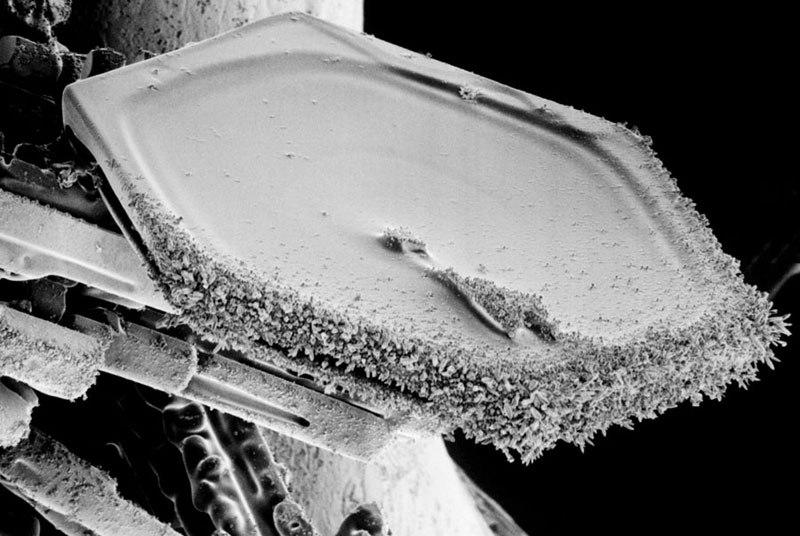
When studying a hexagonal snow crystal with a rim under an electron microscope, one can see how many subtle and diverse imperfections it has that cannot be reproduced at the molecular level
But if you want to ignore the differences at the atomic and molecular level, and use artificial snowflakes, you have a chance. Snowflake researcher Kenneth Libbrecht from Caltech developed a technology for creating artificial identical snowflakes and photographing them using a special microscope, which he called the SnowMaster 9000.
Growing snowflakes side by side in certain laboratory conditions, he showed that you can create two snowflakes that are indistinguishable from each other.
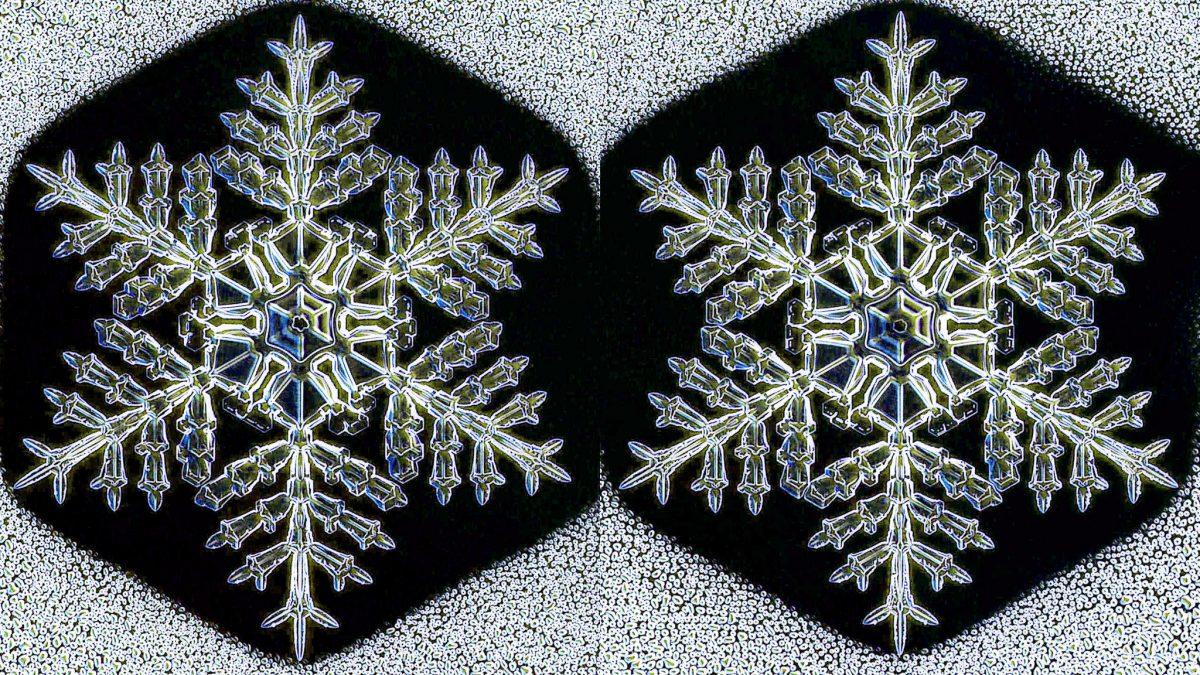
Well, or something like that. They are indistinguishable for a person looking through a microscope - but in fact they are different. Like the identical twins, they have many differences: different places of molecular bonds, slightly different branching, and the more they are, the better these differences are visible. That is why these snowflakes make small, and the microscope is taken powerful: the simpler the snowflakes, the smaller the differences between them.

However, many snowflakes are alike. But if you look for actually identical snowflakes, at the structural, molecular or atomic level, then nature will never give you that. The number of possibilities is too great not only for the history of the Earth, but also for the history of the Universe. If we calculate how many planets Earth we need in order for us to have a chance to find two identical snowflakes for all 13.8 billion years of the Universe existence, we will get a number of the order of 10,000,000,000,000,000,000,000 . And since there are only 10 80 atoms in the observable universe, this is very unlikely. So, apparently, all the snowflakes are really unique.
Ethan Siegel - astrophysicist, popularizer of science, blog Starts With A Bang! He wrote the books Beyond The Galaxy , and Treknologiya: Star Trek Science [ Treknology ].
Source: https://habr.com/ru/post/370851/
All Articles